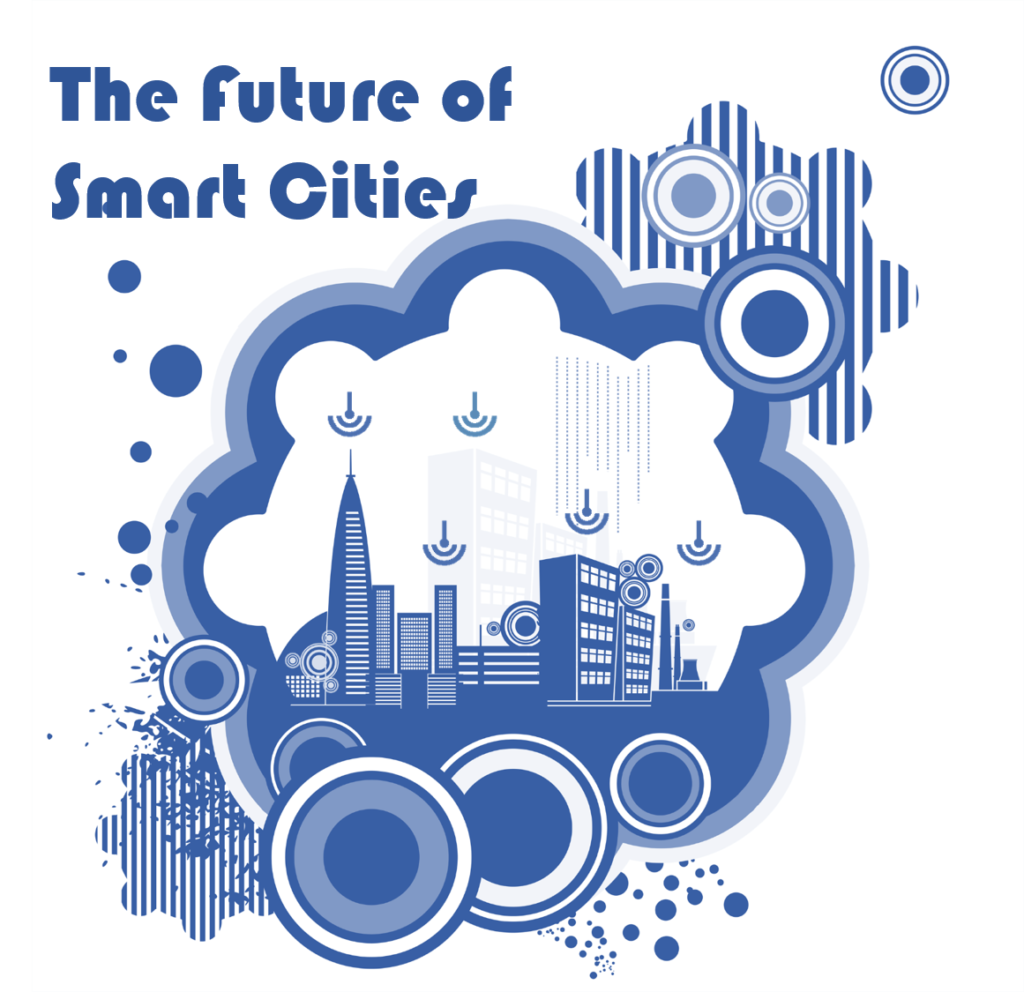There is a lot of discussion about smart cities and how a city can earn the “smart city” label. Most of those discussions focus on technology and how it can be used to make cities more efficient. As the global population continues to urbanize, ensuring that resources are used efficiently and systems are operated effectively are certainly imperatives. Nevertheless, the focus of smart city initiatives should be people. My preferred definition of a smart city is:
A Smart City uses technology to enhance quality, well-being, and safety of citizens. It provides the means to engage more effectively and actively with its citizens and enterprises. And lastly, it monitors and enhances urban systems to help city authorities reduce costs and resource consumption for their cities.
I like this definition because it places citizens first and technology last. Don’t misunderstand me. Technology is the sine qua non of a smart city. The more complex cities become the more essential it is to operate smart systems; but, smart systems are only put in place to improve the quality of life for urban residents. For that reason alone, every metropolis should strive to become a smart city. But will they? Carl Weinschenk believes, “Smart cities will definitely happen, probably.”[1] Weinschenk’s ambivalence focuses on public/private tensions about who should own, implement, and operate the broadband backbone upon which smart cities must be built. My concern is that a fog of technology will obscure the ultimate objective of making cities more livable for their residents.
Smart Cities and Smart Phones
Weinschenk is correct in observing there can be no smart cities without broadband connectivity. Brookings’ analysts, Adie Tomer (@AdieTomer) and Rob Puentes (@rpuentes), bluntly state, “No industry or household in the world, will reach their future potential without access to broadband, it is the electricity of the 21st century.”[2] Weinschenk writes:
“The new reality created by the Internet of Things (IoT), Big Data, software-defined networks (SDNs) and other advances has many ramifications. One of those riding slightly under the radar is that municipalities, even big cities, can essentially be programmed. Smart cities can just as easily be called programmed cities. This, obviously, raises a great number of issues. One of the most important is a common one in regard to new technology: How is it implemented on a wide scale basis? It clearly isn’t enough to know that this technology is available or that it works under controlled conditions. It also must be widely implemented. The major players are the telecommunications providers.”
Nick Ismail (@ishers123) agrees that telecommunications is the key that opens the smart cities future. “Truly ‘smart’ cities,” he writes, “will leverage technology to efficiently and sustainably deliver services to far more citizens without bankrupting themselves in the process. Public and private sector stakeholders must prepare now by implementing smart policies effectively. If they don’t, their cities will be at a serious disadvantage — economically and otherwise — well before 2050. … The smartphone is perhaps the single most important enabling factor when it comes to developing smarter cities because it can enable virtualised services anytime, anywhere.”[3]
Smart Cities System of Systems
Ismail predicts, “In smart cities, the systems behind primary infrastructure will be digitised, always on and openly sharing data whenever it’s practical.” There are, of course, concerns about cybersecurity in this digitized, smart cities world and those concerns need to be addressed. The fact of the matter remains, urban areas will only become truly smart when their systems are integrated. Cities need to be viewed as a living organism whose existence requires a brain (which I predict will be provided by cognitive computing), a central nervous system (which will be provided by the Internet of Things (IoT)), and functioning organs and appendages (i.e., systems and machines). John Chambers and Wim Elfrink (@WimElfrink) believe a holistic approach is actually what it means to be a smart city.[4] They believe a city deserves the “smart” label once they have integrated information across a minimum of three systems. They explain:
“By definition, Smart Cities are those that integrate information communications technology across three or more functional areas. More simply put, a Smart City is one that combines traditional infrastructure (roads, buildings, and so on) with technology to enrich the lives of its citizens. Creative platforms and killer apps have helped reduce traffic, parking congestion, pollution, energy consumption, and crime. They have also generated revenue and reduced costs for city residents and visitors.”
IBM believes smart cities should have six core systems that should be optimized both individually and holistically. Those “systems” are: people; business; transport; communication; water; and energy. I would add a seventh system — waste management (which would include both trash and sanitation). Ismail believes a holistic approach to systems management will only be achieved if cities follow a few core principles. According to Ismail, systems must be:
Experience-oriented: citizens and visitors only show up physically to have an experience or receive a service, not to plan or purchase it.
Solutions-oriented: technology is applied to address a specific problem.
Fully digitised: all services and infrastructure are optimised for a mobile-first population, with physical backup services for those without digital access.
Seamlessly interconnected: all services and infrastructure open to deep links, or sharing, so that if required they can work together through an ecosystem of best-of-breed apps.
He concludes, “When civic initiatives are based upon these principles, the result will be smart solutions that can adapt quickly to changing needs and scale as the city’s population grows. Those are the kinds of smart initiatives cities will need by 2050, and some are already implementing them.”
Smart Cities Future Over the Next Decade
“By 2025,” writes Gavin Wheeldon (@gavinwheeldon), CEO of Purple, “the [Smart Cities] concept will be firmly bedded into our societies and the benefits of smart cities will be widely felt. … Cities become smart by creating a platform that connects multiple data sets and enables shrewd decision making.”[5] He adds:
“Today, smart cities are already showing how data from multiple IoT solutions can be integrated to inform and improve how cities are run, with applications in mobile and transport, energy and sustainability, physical infrastructure, governance, and safety and security. The key words of smart cities are: connectivity, data and intelligence — leading to efficiency, sustainability and convenience. … So can it get even better by 2025? What can we expect to change in the next decade?”
In answering his questions, Wheeldon exhibits an optimism that is laudable but ambitious. “In nine years’ time,” he predicts, “people, things and places in every aspect of urban society will be connected, with increasing scale and reach. Instead of a linear set of data collection, analysis and reaction; there will be a real-time exchange of sensing and response.” He goes on to talk about smart buildings, adaptive heating and lighting, and more. He concludes, “2025 will not be the end of smart city development. Progress will be ongoing. By 2050, individual buildings and public spaces will be part of a highly sensitive network. … In 2025 and beyond, data driven smart cities will be the norm. As the social proof of the benefits they bring to individuals and society starts to become more tangible and visible, there may be a greater acceptance of sharing information about the way we live within, and interact with, urban environments.”
Summary
I hope Wheeldon’s optimism proves accurate. A lot of pieces need to be put in place if his 2025 goal of having every aspect of urban society being connected is to be met. Weinschenk notes telecommunications companies are battling against city-owned services. Other analysts note real progress depends upon the emergence of standards for the Internet of Things. Still other analysts believe the biggest obstacle to smart cities initiatives is not technology but governance. With two-thirds of the world’s population predicted to be living in urban areas by 2050, the imperative for making our cities smart is clear. The question remaining is whether stakeholders will heed that clarion call.
Footnotes
[1] Carl Weinschenk, “Smart Cities Will Definitely Happen, Probably,” IT Business Edge, 10 October 2016.
[2] Adie Tomer and Rob Puentes, “Here’s the Right Way to Build the Futuristic Cities of Our Dreams,” Wired, 23 April 2014.
[3] Nick Ismail, “Smartphones – not flying cars – will define the smart cities of the future,” Information Age, 12 October 2016.
[4] John Chambers and Wim Elfrink, “The Future of Cities,” Foreign Affairs, 31 October 2014.
[5] Gavin Wheeldon, “How smart will our cities be in 2025?” IT ProPortal, 23 October 2016.





